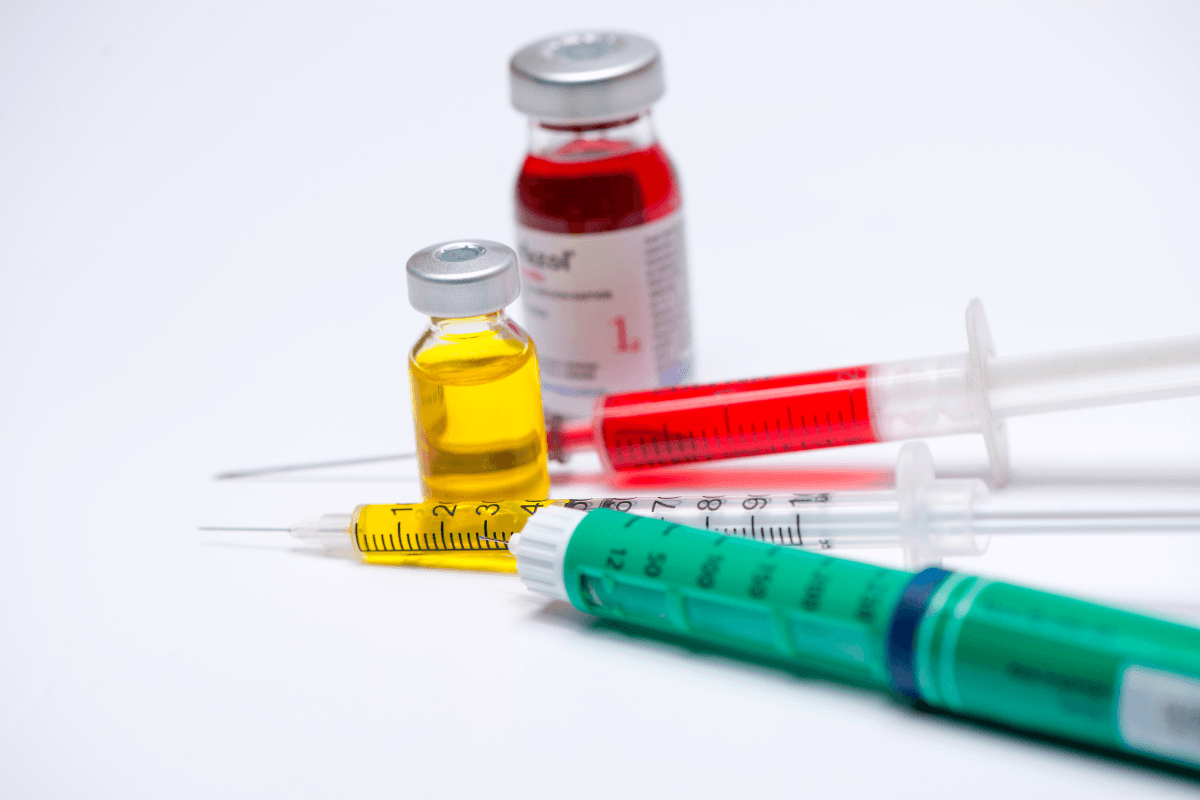If you have diabetes, taking insulin is part of your daily life. But one decision you might not expect is choosing between an insulin pen vs syringe. Both deliver the medication you need, but differ in cost, convenience, and comfort.
Picking the proper method can make your routine easier and improve blood sugar management. This guide explains each option’s features, pros, and drawbacks so you and your doctor can find the best fit for your diabetes care.
What Is an Insulin Pen?
Bolígrafos de insulina are portable devices designed to simplify insulin delivery. They come in two primary forms: disposable pens, which are thrown away when empty, and reusable pens, which use replaceable cartridges. Pens work with small insulin pen needles that attach to the tip of the pen for each injection.
Using a pen is straightforward: attach the needle, turn the dose dial, inject, and dispose of the needle. Many patients prefer pens because they are discreet, quick to use, and reduce the chances of dosing errors. The main drawback is that they can cost more than syringes, especially for those without insurance coverage.
How About an Insulin Syringe?
Insulin syringes are used for the traditional method of delivering insulin. They involve the use of insulin vials and require drawing the correct amount before injecting. Syringes are available in various sizes, depending on your prescribed dose.
Syringes are generally more affordable than pens and allow for exact dose adjustments, which is essential for some patients. However, they require more preparation time, can be less discreet, and may increase the risk of minor dosing errors if measurements are rushed.
Insulin Syringe vs Pen: Key Differences
When comparing an insulin pen and a syringe, think about how each method fits into your lifestyle:
- Ease of use – Pens are quick to prepare and inject; syringes require more steps.
- Portabilidad – Pens are compact and discreet; syringes are bulkier due to vials and supplies.
- Dosing accuracy – Pens simplify setting the same dose repeatedly; syringes give more flexibility for minor adjustments.
Insulin Pen Vs Syringe Cost
The cost comparison between insulin pens and syringes can vary significantly depending on your insurance coverage, brand choice, and whether you buy supplies in bulk.
- Insulin pens have a higher upfront cost, plus ongoing expenses for pen needles, cartridges, or disposable pens.
- Insulin syringes have a lower cost per injection and are often sold at a reduced price in multi-packs.
Some insurance plans cover one method more generously than the other, so it’s worth comparing your copays before deciding.
Needles for Pens and Syringes
While both methods require needles, their design is different. Pen needles are short and fine, often less intimidating and more comfortable for many patients. Syringe needles come in various lengths and gauges, allowing you to select one that works best for your injection site and comfort level.
When learning how to give insulin injection safely, always use a new needle for each dose and dispose of it in a proper sharps container to prevent injury and reduce the risk of infection.
When to Choose an Insulin Pen
You may prefer an insulin pen if you:
- Want quick, convenient injections with fewer steps.
- Need a portable device for travel, work, or school.
- Prefer a discreet method for public use.
When to Choose an Insulin Syringe
An insulin syringe may be the better choice if you:
- Need the most cost-effective delivery method.
- Require minimal dose adjustments.
- Prefer a technique that works with all insulin types and vials.
Tips for Switching Between Methods
Some patients switch between an insulin pen and syringe depending on cost, travel plans, or changes in their prescription. If you’re making a switch:
- Review the correct dosing method for your new device.
- Practice with your provider before your first injection.
- Double-check dose measurements to avoid mistakes during the adjustment period.
The Bottom Line on Insulin Syringe versus Pen
Both pens and syringes deliver insulin effectively. Your decision depends on your comfort, daily routine, and budget. Work with your healthcare team to choose the delivery method that makes your treatment easier to manage and fits your lifestyle.
If you’re starting treatment or exploring your options, visit our Insulin Medications Page para más información, consejos de dosificación y ayuda.
Conclusión
Choosing between an insulin pen vs syringe is a personal decision based on convenience, cost, and comfort. Understanding the differences will help you work with your healthcare provider to find the insulin delivery method that best supports your diabetes care.
Preguntas más frecuentes (FAQ)
Are pens more accurate than syringes?
Pens can help reduce dosing errors, but syringes allow for more flexible small-dose adjustments when very small doses are needed. Your choice may depend on your comfort level, vision, and dexterity.
Do I need a prescription for insulin pens or syringes?
Yes, in most U.S. states, both require a prescription. Your pharmacy or healthcare provider can guide you on the local regulations in your area. In some cases, local laws may allow syringes without a prescription, but this varies.
Which is cheaper, pens or syringes?
Syringes are generally less expensive, but insurance coverage can change the final cost. It’s a good idea to compare prices and check your benefits before deciding.
Can I reuse pen needles or syringes?
No, both pen needles and syringes are designed for single use only. Reusing them increases the risk of infection and can dull the needle, making injections more painful and less accurate. Using a fresh needle each time ensures better safety and comfort.
What’s the best needle size for insulin injections?
The best needle size depends on your body type, the injection site, and your comfort level. Shorter, thinner needles can work well for many people and may reduce discomfort. Your healthcare provider will recommend the right length and gauge to ensure insulin is delivered effectively.


